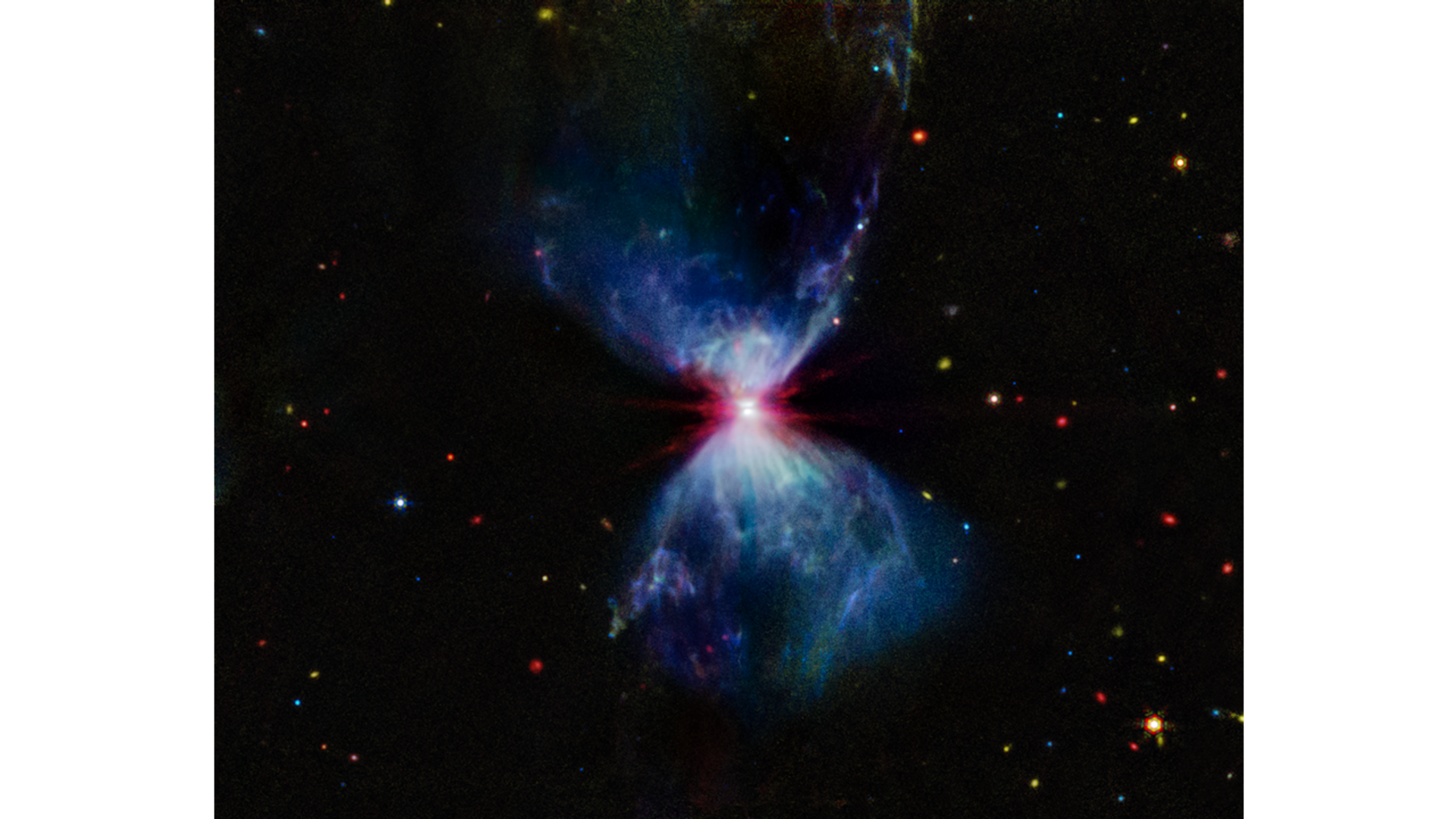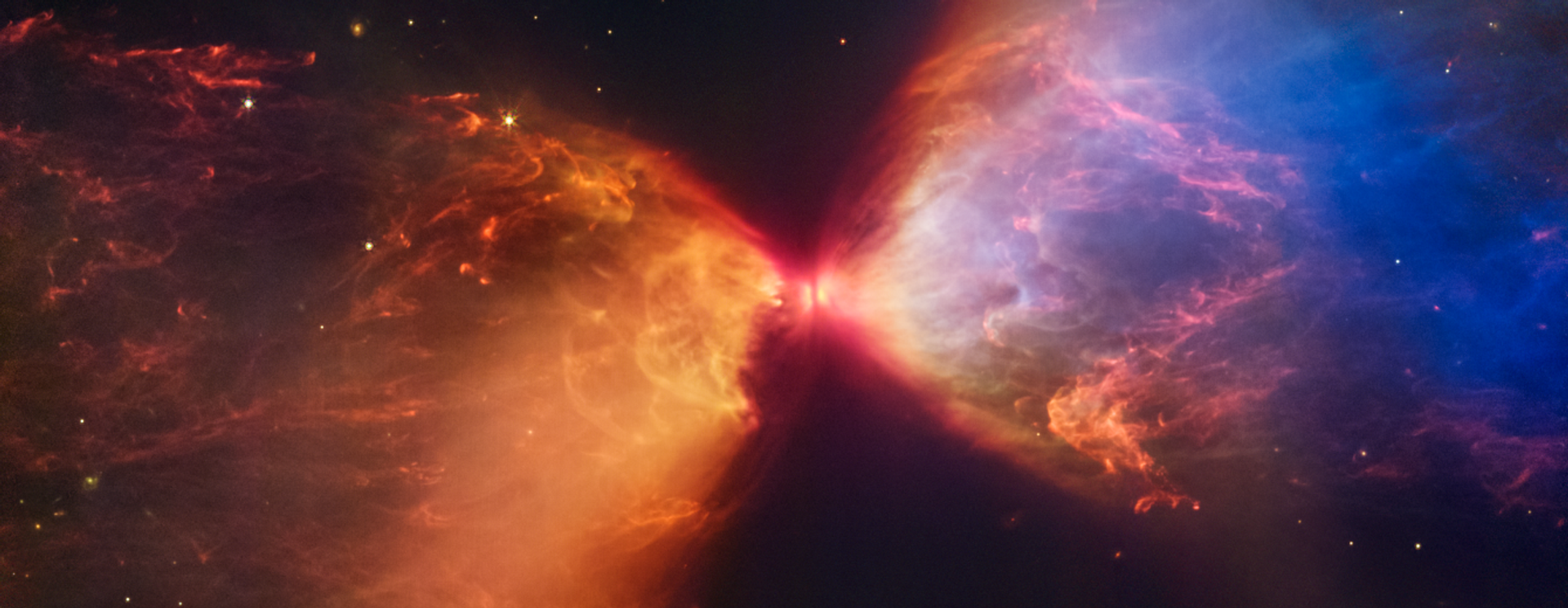https://sputnikglobe.com/20240706/nasa-telescope-releases-new-image-of-celestial-fireworks-surrounding-star--1119257294.html
NASA Telescope Releases New Image of Celestial Fireworks Surrounding Star
NASA Telescope Releases New Image of Celestial Fireworks Surrounding Star
Sputnik International
The image shows the protostar gathering mass from its parent molecular cloud L1526 which is located in the constellation Taurus, about 460 light-years from Earth.
2024-07-06T05:15+0000
2024-07-06T05:15+0000
2024-07-06T05:15+0000
beyond politics
science & tech
nasa
james webb space telescope (jwst)
space exploration
space research
galaxies
celestial body
stars
https://cdn1.img.sputnikglobe.com/img/07e8/07/06/1119256922_0:0:1280:720_1920x0_80_0_0_97eb7a1bbc8ae09e79f5ceffa56a7070.png
NASA has released a new image from the James Webb Space Telescope as a way to celebrate July 4. The image is of a young object becoming a star, and shows a fiery hourglass made up of a molecular cloud harboring a protostar.The protostar is about 100,000 years old, which is relatively young for the object. The image shows the protostar gathering mass from its parent molecular cloud L1526 which is located in the constellation Taurus, about 460 light-years from Earth.In the image, diffuse blue light and the filamentary structures in the image come from organic compounds known as “polycyclic aromatic hydrocarbons (PAHs)” while the red at the center of the structure is an “energized, thick layer of gasses and dust that surrounds the protostar”, NASA explained. “The region in between, which shows up in white, is a mixture of PAHs, ionized gas, and other molecules.”“They are also responsible for carving the bright hourglass structure within the molecular cloud as they energize, or excite, the surrounding matter and cause the regions above and below it to glow.”NASA had previously released their first image of the fledgling star from Webb’s Near-Infrared Camera which showed clear details of the celestial stunner. Looking at analyses of both near-infrared and mid-infrared data, NASA can surmise the overall behavior of the system including how the central protostar affects the surrounding region.“As the protostar continues to age and release energetic jets, it’ll consume, destroy, and push away much of this molecular cloud, and many of the structures we see here will begin to fade,” the administration explained. “Eventually, once it finishes gathering mass, this impressive display will end, and the star itself will become more apparent, even to our visible-light telescopes.”
Sputnik International
feedback@sputniknews.com
+74956456601
MIA „Rossiya Segodnya“
2024
News
en_EN
Sputnik International
feedback@sputniknews.com
+74956456601
MIA „Rossiya Segodnya“
Sputnik International
feedback@sputniknews.com
+74956456601
MIA „Rossiya Segodnya“
space exploration, space research, rocket science, nasa, distant stars, celestial fireworks, celestial bodies, molecular cloud, distant galaxies, distant planets, space colonization, space adventure
space exploration, space research, rocket science, nasa, distant stars, celestial fireworks, celestial bodies, molecular cloud, distant galaxies, distant planets, space colonization, space adventure
NASA Telescope Releases New Image of Celestial Fireworks Surrounding Star
The image was taken with Webb’s MIRI (Mid-Infrared Instrument), and shows a “central protostar growing in the neck of what appears to be an hourglass shape, NASA said.
NASA has released a new image from the James Webb Space Telescope as a way to celebrate July 4. The image is of a young object becoming a star, and shows a fiery hourglass made up of a molecular cloud harboring a protostar.
The protostar is about 100,000 years old, which is relatively young for the object. The image shows the protostar gathering mass from its parent molecular cloud L1526 which is located in the constellation Taurus, about 460 light-years from Earth.
In the image, diffuse blue light and the filamentary structures in the image come from organic compounds known as “polycyclic aromatic hydrocarbons (PAHs)” while the red at the center of the structure is an “energized, thick layer of gasses and dust that surrounds the protostar”, NASA explained. “The region in between, which shows up in white, is a mixture of PAHs, ionized gas, and other molecules.”
The outflows which are emitted in opposite directions along the protostar’s rotation axis as the object consumes gas and dust from the surrounding cloud, NASA explained. The outflows “take the form of bow shocks to the surrounding molecular cloud, which appear as filamentary structures throughout".
“They are also responsible for carving the bright hourglass structure within the molecular cloud as they energize, or excite, the surrounding matter and cause the regions above and below it to glow.”
NASA had previously released their first image of the fledgling star from Webb’s Near-Infrared Camera which showed clear details of the celestial stunner. Looking at analyses of both near-infrared and mid-infrared data, NASA can surmise the overall behavior of the system including how the central protostar affects the surrounding region.
“As the protostar continues to age and release energetic jets, it’ll consume, destroy, and push away much of this molecular cloud, and many of the structures we see here will begin to fade,” the administration explained. “Eventually, once it finishes gathering mass, this impressive display will end, and the star itself will become more apparent, even to our visible-light telescopes.”



